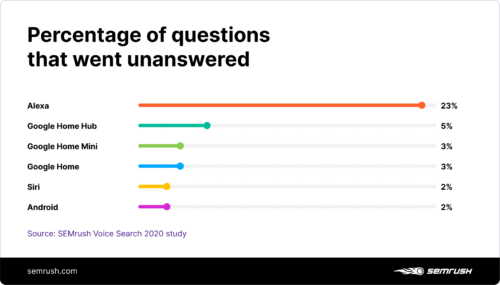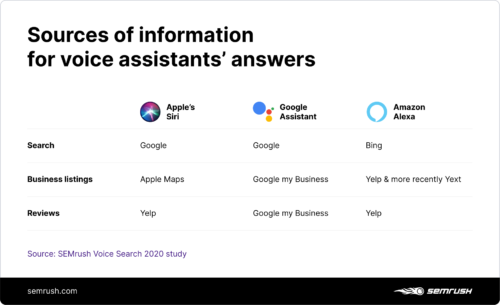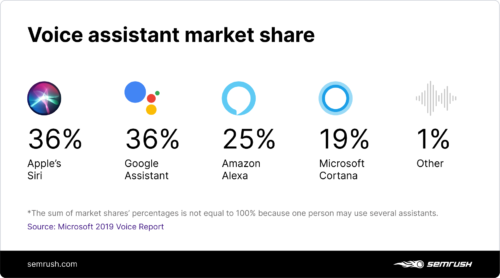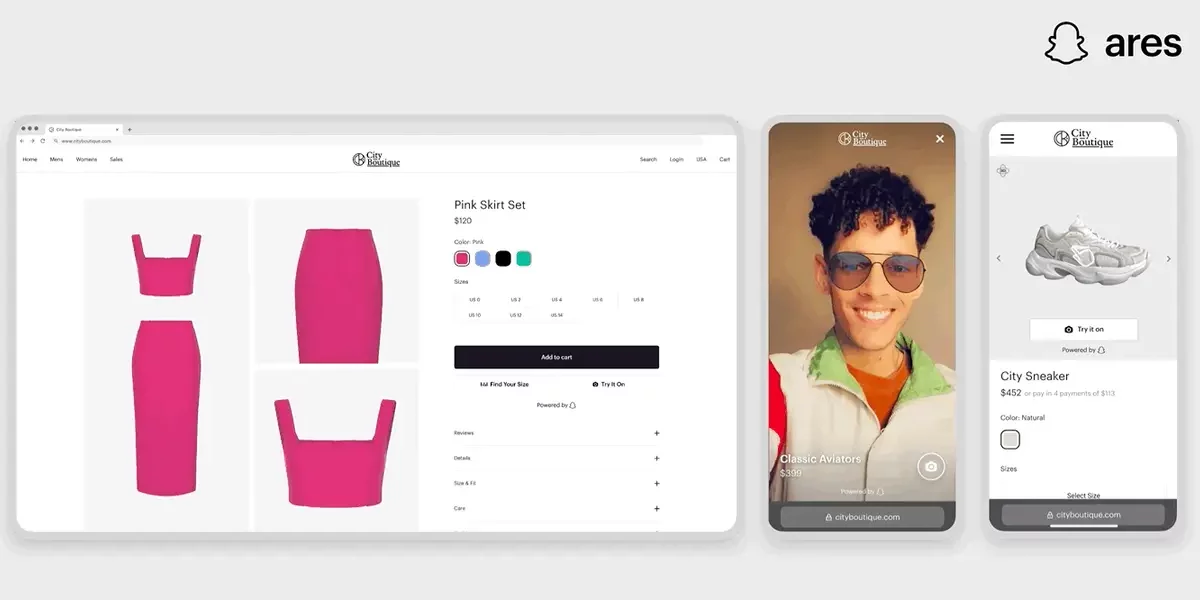Local searches offer great opportunities for retailers
by Julia Pott (exclusively for EuroShop.mag)
“Okay Google, where is the nearest supermarket?” or “Alexa, order new batteries for my flashlight.” Smart speakers and digital assistants play an increasing role in helping us with everyday tasks. These tools are controlled with voice commands versus text, allowing users to search and shop online, which is called voice search or voice commerce.
We give you a quick overview: What is the potential of voice technology in retail? What are the challenges? And how can retailers and providers take this next critical step to e-commerce success?
Increasing use of voice search
Digital voice assistants are increasingly significant, with the search function being a prominent feature. According to Google, 27 percent of the global online population is using voice search on their mobile device. eMarketer also reported that one-third of US Americans have used voice search in 2019 and sees a steady upward trend.

As a rule, the more consumers use these applications, the better they get. Voice assistants that speak German and English have made great strides in understanding queries and answering them correctly. In its 2020 Voice Search study, SEMrush reveals the percentage of unanswered questions is very low at 6.3 percent. (Amazon’s Alexa raises the percentage but is admittedly not designed to answer many of the tested searches.) // © SEMrush
According to the ‘Postbank Digital Study 2020’, the use of voice assistants is also on the rise in Germany. It concludes that 45 percent of Germans use digital voice assistants, up from 32 percent the prior year.
The platforms are also gaining popularity among consumers over 40: “Older adults who didn’t grow up with digital devices clearly prefer voice assistants. They consider it cumbersome to type, scroll, and swipe,” says Thomas Brosch, Chief Digital Officer at Postbank. Younger users appreciate the ‘hands-free’ control with voice assistants, allowing them to get information they need without interrupting what they are doing.
Voice search specifics
Searches using spoken voice commands differ from typed queries. As a result, voice searches are also changing shopping behavior, which must be reflected in the way retailers create and optimize voice commerce sales:
- Consumers talk with their digital assistants like they do with real people. Conversational commerce – via voice or text – sees users state questions or requests in complete sentences.
- The voice assistant reads all information and search results out loud. This means that content must be made understandable for users as they listen. Images or graphics are of little use in this setting.
- Brief and concise answers are especially helpful.
- Since consumers typically use digital voice assistants without a monitor or screen, they prefer search results that feature short lists with relevant links versus detailed overviews.
- When using a voice assistant, ‘leisure browsing’ is replaced by buying favorite products.
- Consumers tend to utilize this channel to look for solutions or specific products rather than to find inspiration.
Seamless voice commerce experience
How can I help my business appear in voice search results and position it for voice commerce success? Here are some suggestions.

© SEMrush
Strategies for voice search optimization (SEO)
- Create great FAQ content to answer your customers’ most frequently asked questions.
- Optimize your site for the respective search engines of Google Assistant, Apple’s Siri, and Amazon’s Alexa. You can find for more tips with SEMrush or the Local Marketing Institute.
- Keep your online business information on sites like Google and Yelp updated and complete.
- Monitor your online reputation, respond to negative feedback, and actively promote positive customer reviews.
It goes without saying that online store functionality must also be optimized for voice commerce. Other aspects such as product suggestions, precision, recall, the right filter, accuracy of voice control search results and personalized consumer experience are likewise growing in importance.
Voice commerce use cases: Technology is still in its infancy
A big issue – especially in Europe and Germany – are legal and technical challenges that still need to be resolved: How can customers prove their identity via voice or facial recognition, for example, and subsequently make secure payments via voice assistant? According to the Deloitte study ‘Beyond Touch: Voice Commerce 2030’, in Europe, so far only Amazon offers a respective voice commerce solution. Unlike the US, where retailers also enable voice commands to order products via Google Assistant. German and European options mainly serve the exchange of information.
In 2017, Rewe launched its voice assistant by the name of ‘Caro’. The interface suggests recipes and sets the timer. The company also offers the ‘REWE Assistant’, which helps consumers with their shopping list. At the HIT Sütterlin supermarket in Aachen, Alexa reads back the weekly sales and deals for customers. MediaMarkt offers a great service via Google Assistant. Customers can find the perfect television for themselves by using the company’s voice-controlled TV product adviser.
Reifendirekt.de, an online store of Delticom AG, developed an Alexa skill – a voice-driven Alexa capability – that allows customers to order tires from Amazon and pay using Amazon Pay. On the international scene, Flipkart is an e-commerce company in India, purchased in 2018 by Walmart. Flipkart’s voice assistant handles the entire purchase process in either Hindi or English.
Global players versus local heroes: Risks and opportunities for retail stores
This creates risks and opportunities for stakeholders, as is so often the case with new technologies and market shifts.

© SEMrush
The three tech giants, namely Amazon, Google, and Apple, lead the global market for digital voice assistants. In its study, Deloitte warns that “retailers and manufacturers have to hand over a substantial portion of customer access […] to platform providers […] that facilitate consumer communication.”
In its blog, SEMrush points to its study ‘Voice Search 2020’ and reveals that 58% of voice users employ it to run a local business search. And according to Google, 60 percent of smartphone users have contacted a business directly using the site’s search results. This is when retailers and providers can seize the chance to establish direct consumer contact after the initial search.
The use of voice assistants and the way many functions are linked on mobile devices and smart speakers generates large amounts of consumer data. Insights into user behavior and search contexts make it possible to improve personalized options. A recent example: Since earlier this year, Google has started to carry over the context from one query to another, using context from recent activities to improve search results (news). Walmart adds items to the shopping list based on the consumer’s Walmart shopping history and preferences: Customers only need to request “milk” and their preferred type of milk is added to the grocery cart. Deloitte rates the future opportunities for businesses: “A swift redirection of your marketing budget towards recommender marketing [product recommendations, for example], has positive long-term effects – thanks to cost-intensive but effective targeting.”
There is still a limited number of voice commerce examples and use cases in the retail sector at the moment. It shows that this technology is very much still in its infancy in terms of its practical implementation. However, this type of commerce suggests great potential because a voice-controlled shopping experience is convenient and intuitive, while payment takes a backseat – and that holds great promise for success.




















